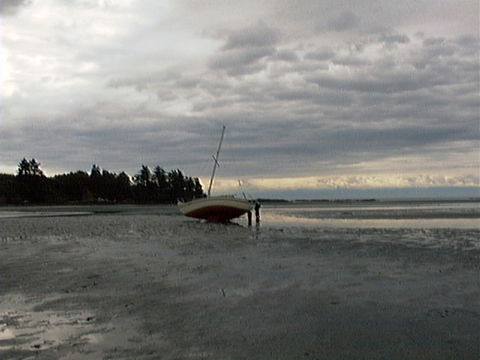
False Bay is typical for semi-protected muddy bays found in the Strait of Georgia region in having mixed a substratum of clean sand and mud (Kozloff 1996). The central portion (eelgrass zone) of this shallow tidal bay is subject to much wave action and was consequently sandy. Edges of the bay, on the other hand, had less flushing and were a muddy quagmire with much Ulva cover. Intertidal organisms of the bay are very substrate-specific, and the organisms found in different zones within False Bay were consistent with what is normally found in sandy and muddy substrata. The two sites with exposed sediment (Lugworm and Sandbar sites) most likely differed in species composition and diversity because the more exposed area and larger particle size in the sandbar area allowed the greater water flow needed by many burrowing organisms. This type of causal relationship could be tested by a rigorous field experiment.
The two sampled muddy sites (mud shrimp and Ulva), found on the east and west peripheries of False Bay, most notably differed in the amount of Ulva cover, which may have also affected the species number and taxonomic diversity. Ulva cover increases the amount of organic matter that tends to augment species richness (Kozloff 1996). However, organic content can be influenced by many factors such as long term historical patterns. To determine if Ulva cover is the dominant influence of species richness would require additional field experiments in which Ulva is removed or supplemented.
An area we did not investigate is the effect of permanent tide pools on species composition. False Bay contains many near-permanent tide pools and tide streams left behind by a receding tide. These could effect species composition on adjacent sand bars and sand islands. Sand bars that are semi-perminently isolated may have less species than those that are not, and sand bars that are isolated by pools containing extensive algae may be richer than those that have mostly clear pools.
The diversity of micro-habitats make
False Bay an ideal place to study the many types of organisms that inhabit
large, protected, shallow intertidal bays. The diversity in sediment size,
algae covering, and topography make it possible to explore several different
biotas in one morningís lowtide.
Potential Research Questions for the Future
